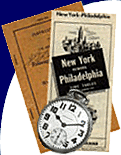

| home | articles | briefs | classifieds | flimsies | interchange |
 |
 |
||||||
|
|||||||
 |
RyPN Briefs October 18, 2006 previous brief ~ return to briefs index ~ next brief Broad Gauge Garratt Restored in India This engine can alone pull the weight of a thousand elephants and now it's back in action. India's biggest locomotive ever - the Beyer Garratt - is coming back to life. The locomotive is being restored by the South Eastern Railway and they have scheduled an inaugural run, on November 11th, between the Shalimar and Mecheda sections of the Kharagpur division of the railway line. Sources said the N-class Beyer Garratt was the largest locomotive of its kind to run anywhere in the world and has the largest water capacity of any Garratt ever manufactured, about 10,000 gallons. "The engine was imported from Beyer, Peacock and Company locomotive builders based in Gorton, East Manchester in 1929 by the Bengal Nagpur Railway and remained in service till 1969. The N-Class also holds the distinction of being the largest railway locomotive to run in India," Subhasis Ganguly, SE Railway's Chief Heritage Officer told HT. "Though the actual restoration has taken one year, the entire project, including research and gathering the right kind of people, has taken two years. There are more than 50 persons involved in the project, but it is difficult to estimate the exact cost as it was done as a side activity. This is one of the only three such surviving locos in India," he added.
Ganguly, who has researched and conceptualised the concept and revived the locomotive, said it was originally used on coal traffic between Chakradharpur and Jharsuguda, Anara to Tatanagar and also to Asansol. They were last used in 1970-71 hauling 2,400 ton iron ore trains from Dallirajhra to Bhilai. Since the section was electrified the engine, once out of use, was sent to Kharagpur. "The Garratt is a type of articulated steam locomotive. This means that unlike a conventional locomotive, where the whole machine is carried on a single set of frames, a Garratt has three separate frames," he added. The name "Garratt" derives from the engineer Herbert William Garratt, a British locomotive engineer, who devised the type, and developed it in association with the Manchester firm of Beyer Peacock, which built most of the Garratts used around the world. |
|||
Copyright © 1998 thru 2025, all rights reserved, contents may not be used without permission. |